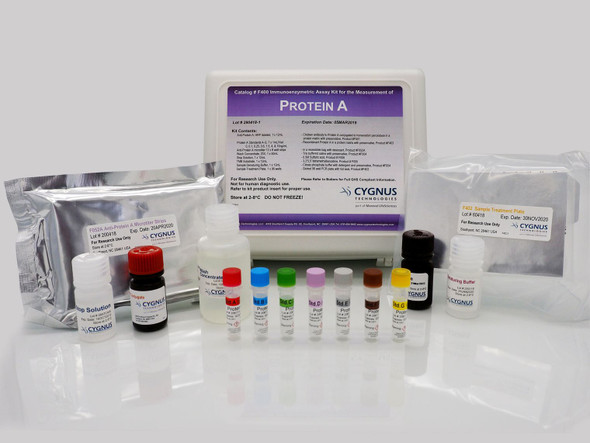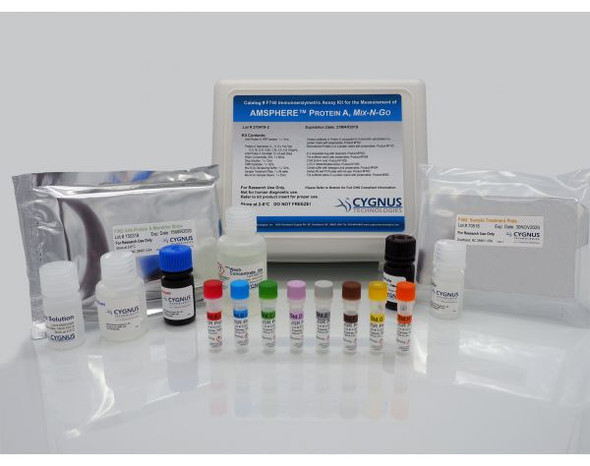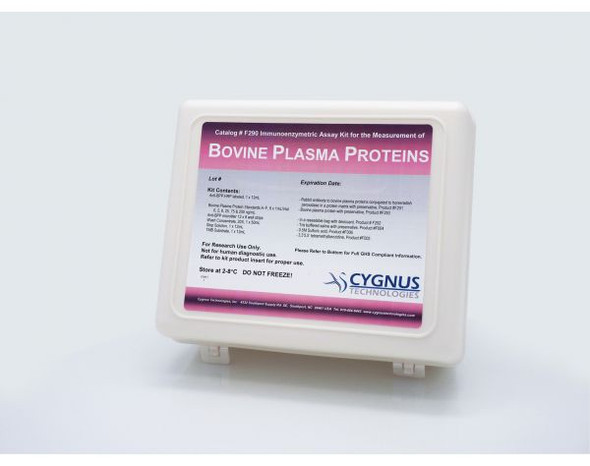Protein A ELISA Kit | F400Z
- SKU:
- 214-F400Z
- Size:
- 1 Kit
- Product Type:
- ELISA Kit
- Storage:
- All kit reagents 2°C to 8°C
- Assay format:
- 96 Well Plate
- Time to result:
- ~3 hrs. 20 min
- LOD:
- ~50 pg/mL
- LLOQ:
- 100 pg/mL
- Recommended Diluent:
- I028
Description
Protein A ELISA Kit | F400Z
Protein A ELISA Kit is intended for use in quantitating Protein A. The kit is for Research and Manufacturing Use Only and is not intended for diagnostic use in humans or animals. This kit represents a modification of the F400 kit which has been extensively qualified for a wide range of products. Both the F400 and F400Z kits use the same components except for the HRP conjugate. The conjugate used in the F400Z kit, Cat # F401Z, is a special formulation made available for problematic samples that do not yield acceptable recovery of Protein A in the F400 kit. The ‘Recovery Enhancer’ reagent provided with this kit (Cat. # F404) must be freshly combined with the F401Z conjugate prior to assay. It is the responsibility of the end user to qualify this kit with their sample types for acceptable accuracy and specificity. The Protein A assay is a two-site immunoenzymetric assay. Samples containing Protein A are first diluted with a sample denaturing buffer. This reagent dissociates the Protein A from the product antibody. Samples are then heated in a dry heating block or boiling water bath to denature and precipitate the product antibodies. After a centrifugation step to pellet the denatured product antibody, the samples are then reacted in microtiter strips coated with a polyclonal antiProtein A capture antibody. A second anti-Protein A antibody labeled directly with Horse Radish Peroxidase (HRP) enzyme is simultaneously reacted forming a sandwich complex of solid phase antibody-Protein AHRP labeled antibody. After a wash step to remove any unbound reactants, the strips are then reacted with tetramethylbenzidine (TMB) substrate. The amount of hydrolyzed substrate is read on a microtiter plate reader and will be directly proportional to the concentration of Protein A present. Accurate quantitation is achieved by comparing the signal of unknowns to Protein A standards assayed at the same time.














